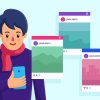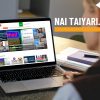A bungee workout is the best option for you if you are looking for a dynamic, effective, and interactive workout. For instance, if your current workout regime bores you, you must try out bungee fitness. Generally, this workout combines resistance training with aerobics and dance to create a unique training experience.
In this article, you will learn about bungee workouts and a training plan to start with. Additionally, this article also explains the benefits and risks of this fitness training. Moreover, you will learn about the types of bungee workouts and the equipment you need. Finally, you will learn some safety tips and precautions.
Hence, to learn more, read on to the end of the article.
What Is a Bungee Workout?
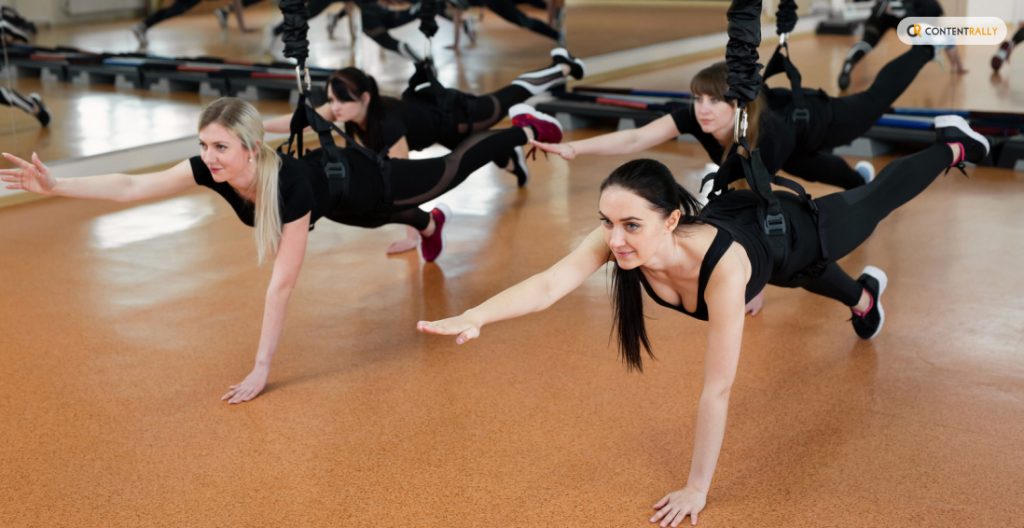
In a bungee workout, you have to perform body-weight exercises while hanging from a bungee cord. Here, the cord connects to the ceiling. On the other hand, you have to connect to the cord either by a harness or by holding it tight with your hands.
Basically, the bungee cord hangs from the ceiling of the gym. As a result, you get to perform a myriad of exercises. Meanwhile, you are also experiencing buoyancy as the cords pull you upward. Apart from that bungee cord and the harness, you can also use a mat or a floor pad to perform certain exercises where you need to jump or do floor workouts.
In fact, when you are in a bungee fitness class, you can engage in different types of exercises. These include jumps, lunges, squats, cardio dances, and more. In all these cases, the bungee cord pulls you upward by creating buoyancy.
Hence, you achieve resistance and stability from different directions. Basically, this resistance helps you to challenge different muscle groups. Moreover, it improves your overall strength, agility, and endurance.
Apart from that, even some bungee fitness classes incorporate resistance bands, weights, and fitness props. This helps in enhancing the workout experience. In fact, it is a low-impact exercise that helps you to perform full-body cardio and bodyweight exercises.
Benefits of a Bungee Workout
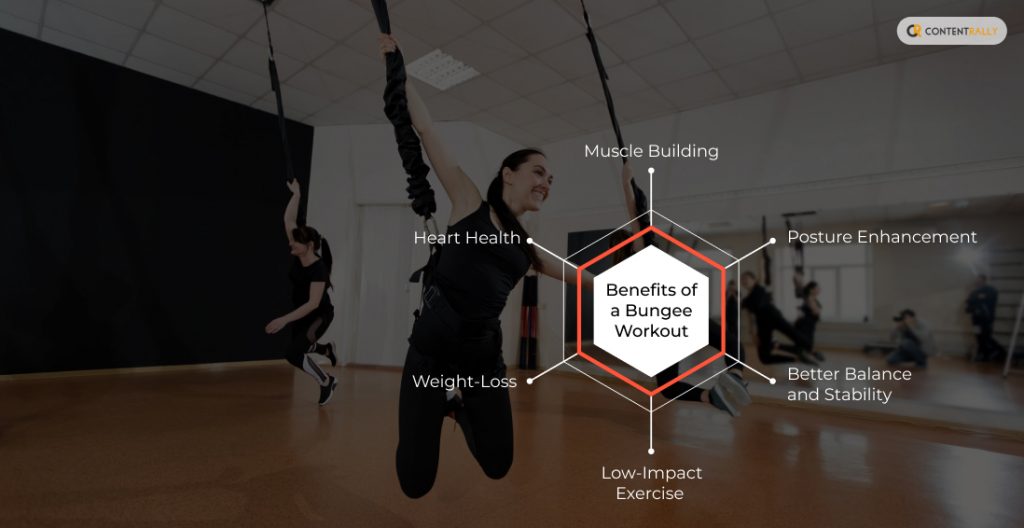
The following are the major advantages you will benefit from if you perform a bungee workout:
1. Muscle Building
When you are in a bungee fitness class, you will generally be doing bodyweight exercises to build muscles. In fact, it is important to perform exercises that strengthen your muscles at least twice a week. This will help you gain strength and maintain muscle mass.
2. Posture Enhancement
To have the right posture, you need to work on your shoulders, back, and chest muscles. Hence, with the help of a bungee workout, you can maintain flexibility and balance.
3. Better Balance and Stability
Generally, a bungee pulls you against gravity. Hence, you need balance and stability to remain on the ground. Moreover, you can switch your stance and perform exercises in different types of foot positions. Thereby, you can gradually improve your balance. Apart from that, you will also become more familiar with movements while hanging from a bungee.
4. Low-Impact Exercise
Although it can be a bit difficult at the start, bungee workouts are adaptable quite easily. Moreover, a bungee workout mainly includes jumping, bouncing, and bodyweight exercises. Also, they do not put pressure on the joints and also prevent injuries. Hence, it counts as a low-impact exercise.
5. Weight-Loss
With the help of bungee workouts, you can burn calories in an enjoyable way. Hence, it can help you a lot in weight loss. Basically, if you use a fund way to lose weight, it will be more effective than traditional exercises that seem demotivating.
6. Heart Health
In most cases, a bungee workout consists of cardio moves. These moves are enough to ensure that your heart pumps well. Hence, you will strengthen your heart muscles and pump more blood to your lungs.
What are the Risks of a Bungee Workout?
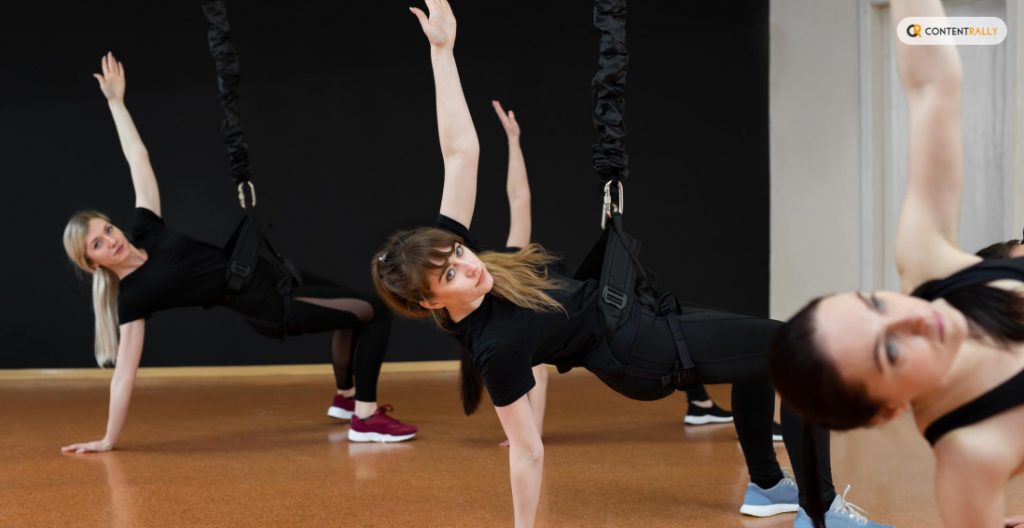
If the fitness studio or gym properly installs all the bungee equipment, it will be safe. However, if you have a recent injury or surgery, you might need to avoid bungee workouts. Moreover, if you are pregnant, a bungee workout is unsafe for you. This is because the bungee harnesses around the waist. Also, it is unsafe if you recently gave birth.
Hence, you must consider consulting a healthcare professional to discuss whether a bungee workout is good for you or not.
Who Can Do Bungee Workout?

Actually, a bungee workout ensures a well-rounded and low-intensity fitness. Hence, if you want to perform low-impact exercises that are easy for your joints, you must consider this workout plan.
Basically, the bungees will help you remove the pressure from your joints, which is usually the case when you use weights. Also, running and high-intensity workouts put pressure on joints. However, it is always a better idea to follow the instructions of a certified trainer. In fact, a trained instructor can help you harness your requirements and abilities.
Moreover, a bungee workout is not a safe option if you are pregnant. However, in some cases, a mild workout can help you boost energy and decrease fatigue. Despite that, do not start a bungee workout regime without discussing a healthcare professional.
On the other hand, if you are a senior, you can try out bungee fitness to restore your muscle mass and bone strength. Generally, seniors lose bone and muscle mass with age. This affects your stability and increases the risk of falls. Hence, with muscle-strengthening exercises with bungee, you can build or preserve strength.
Essential Bungee Workout Equipment You Need

Here are the major equipment you need if you want to start bungee workouts:
- Fitting and moisture-wicking athletic clothes. This will help you see how your body moves in front of the mirror in the gym. Also, it will be easier for the instructor to check your form.
- Socks and Sneakers/Running Shoes.
- A water bottle to hydrate your body while you work out.
Types of Bungee Workouts
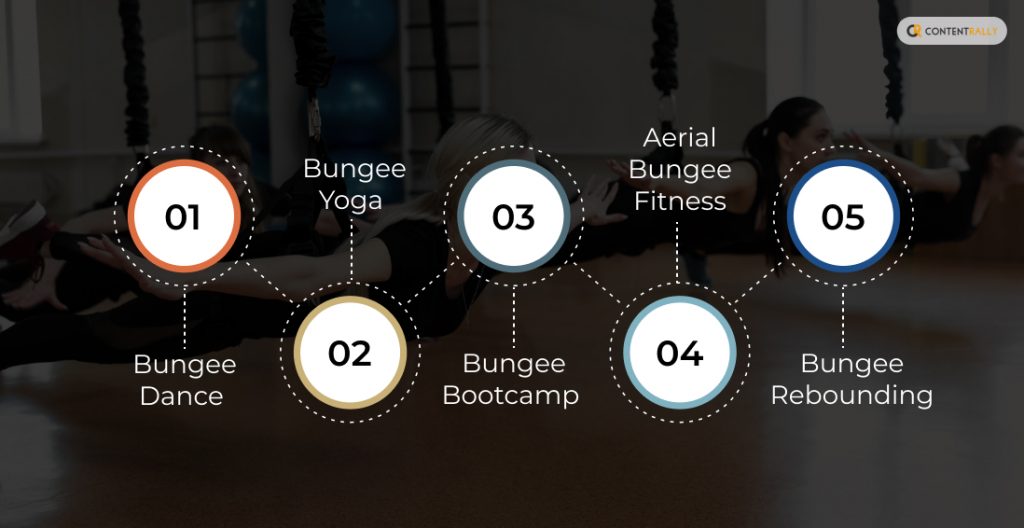
The following are the major types of bungee workout you will have when you join a bungee fitness studio:
Bungee Dance
Here, the trainer combines dance choreography with resistance training with the help of the bungee cord. This helps you to enhance your heart rate, and helps you to tone your muscles, and improve coordination.
Bungee Yoga
It combines traditional yoga with bungee resistance. Here, the cords provide support and resistance for various poses. Thereby it helps improve stability and coordination.
Bungee Bootcamp
This is a high-intensity workout that combines strength training, agility exercises, and cardio with bungee resistance. As a result, you can build muscles, burn fat, and improve your health.
Aerial Bungee Fitness
Here, you perform aerial acrobatics while you hang from your bungee cords. Basically, it helps you with strength, coordination, and flexibility. This helps you improve core strength, generate body awareness, and get more balance.
Bungee Rebounding
This involves bouncing on a small trampoline while you are attached to your bungee cords. It helps you in coordination, balance, and cardiovascular health.
How to Start a Bungee Workout?
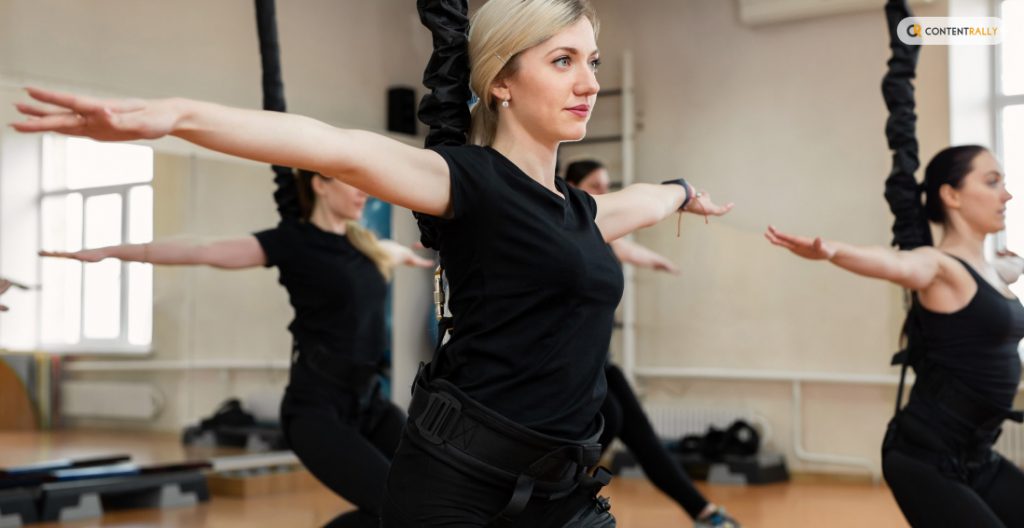
To start a bungee workout, you must join a bungee fitness studio near you. Here, you can consult the trainer regarding how to wear the bungee harness, depending on your comfortability. Moreover, before you start intense exercise with bungee resistance, make sure to perform some stretching exercises without the bungee cord.
Sample Bungee Workout Routine
Here is a sample bungee workout routine:
- Bungee Lunges: 20 lunge reps in each leg of 3 sets.
- Squats: 25 reps of corded squats of 4 sets.
- Jumping: 30 reps Jumping of 3 sets
Safety Tips and Precautions
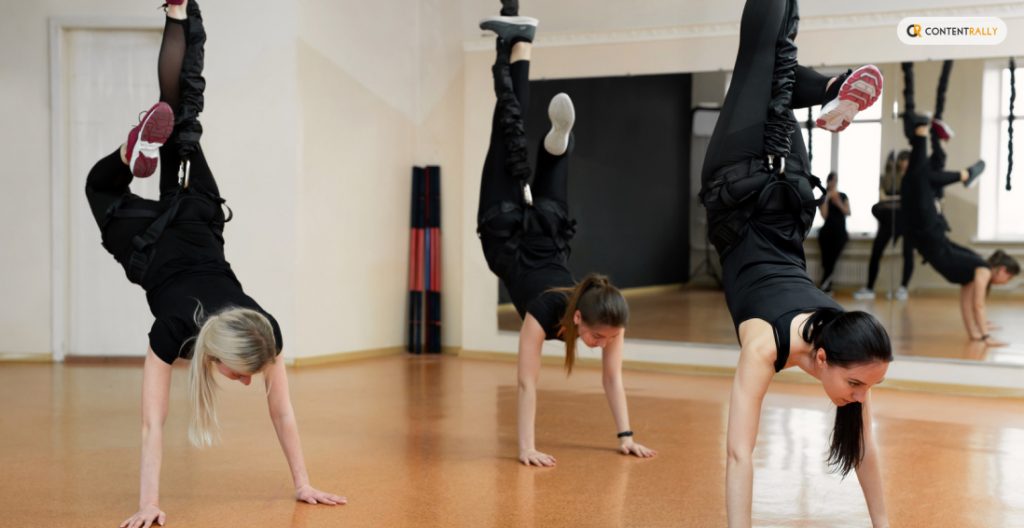
Before you start a bungee workout, here are some safety tips and precautions you must consider:
- Always were fitting and moisture-wicking athletic clothes. Moreover, always wear socks and sneakers.
- Listen carefully to your instructor.
- Do not perform bungee workouts if you are injured or pregnant.
- Do not eat before a workout (at least for 1.5 hours prior).
- Before attaching yourself to a bungee cord, check the weight adjustments.
Start Bungee Workout Now
Now you know the basic details of a bungee workout and its benefits. However, before you join a bungee fitness studio and you are injured, consider consulting with a healthcare professional. Moreover, always discuss every detail of the training with your trainer, and do not try anything new without your trainer’s permission.
Do you have more information to add regarding bungee workouts? Please share them in the comments section below.
Read Also:
